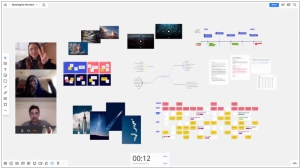Miro vs OmniGraffle
April 23, 2020 | Author: Adam Levine
10
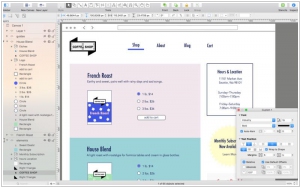
OmniGraffle can help you make eye-popping graphic documents—quickly—by providing powerful styling tools, keeping lines connected to shapes even when they’re moved, and magically organizing diagrams with just one click. Create flow charts, diagrams, UI and UX interactions, and more. Whether you need a quick sketch or an epic technical figure, OmniGraffle and OmniGraffle Pro keep it gorgeously understandable.
Miro and OmniGraffle are both diagramming and visual collaboration tools, but they have some key differences:
Collaboration Focus: Miro is primarily focused on collaborative diagramming and visual collaboration, with real-time collaboration features that allow multiple users to work together on diagrams in real-time. It is designed for team collaboration and provides a wide range of collaborative features, such as commenting, chat, voting, and integrations with other collaboration tools. OmniGraffle, on the other hand, is a standalone diagramming tool that does not have built-in real-time collaboration features. It is more geared towards individual users or small teams who may not require extensive collaborative capabilities.
Cloud-Based vs. Desktop Software: Miro is a cloud-based software that is accessed through a web browser, and it allows users to create and collaborate on diagrams from anywhere with an internet connection. OmniGraffle, on the other hand, is a desktop software that needs to be installed on individual devices (such as Mac or iOS devices) and is not cloud-based. This means that Miro allows for more flexibility in terms of accessibility and collaboration, as it can be accessed from any device with a web browser, while OmniGraffle requires installation on individual devices.
Visual Collaboration Features: Miro is designed to support visual collaboration with a wide range of visual elements, such as sticky notes, shapes, lines, icons, images, and more. It also provides extensive template libraries and integrations with other visual collaboration tools, such as wireframing, mind mapping, and project management. OmniGraffle, on the other hand, is more focused on creating precise diagrams and graphics, and it provides advanced drawing and design tools for creating detailed diagrams, charts, and visual representations. It may be more suitable for users who require more advanced drawing and design capabilities for creating professional-looking diagrams.
Pricing and Licensing: Miro offers subscription-based pricing plans that are billed on a monthly or annual basis, with different plans for individual users, teams, and enterprises. It also offers a free plan with limited features. OmniGraffle, on the other hand, offers perpetual licensing options, where users purchase a license for the software and can use it indefinitely on their devices. However, users may need to purchase additional licenses for updates and new versions of the software.
Platform and Integration: Miro is a cloud-based platform that can be accessed through web browsers on various devices, including desktop computers, tablets, and smartphones. It also provides integrations with other collaboration tools, such as Slack, Microsoft Teams, and Google Workspace. OmniGraffle, on the other hand, is a desktop software that is available for Mac and iOS devices, and it does not provide extensive integrations with other collaboration tools.
Diagramming Types: Both Miro and OmniGraffle support a wide range of diagram types, such as flowcharts, mind maps, wireframes, user interface designs, and more. However, OmniGraffle may provide more advanced drawing and design tools for creating detailed and complex diagrams, while Miro focuses more on the collaborative aspect of diagramming and visual collaboration.
In summary, Miro and OmniGraffle are both diagramming and visual collaboration tools, but they have differences in terms of collaboration focus, cloud-based vs. desktop software, visual collaboration features, pricing and licensing, platform and integration, and diagramming types. Organizations should evaluate their specific needs and requirements to determine which tool best suits their needs.
See also: Top 10 Diagramming software
Collaboration Focus: Miro is primarily focused on collaborative diagramming and visual collaboration, with real-time collaboration features that allow multiple users to work together on diagrams in real-time. It is designed for team collaboration and provides a wide range of collaborative features, such as commenting, chat, voting, and integrations with other collaboration tools. OmniGraffle, on the other hand, is a standalone diagramming tool that does not have built-in real-time collaboration features. It is more geared towards individual users or small teams who may not require extensive collaborative capabilities.
Cloud-Based vs. Desktop Software: Miro is a cloud-based software that is accessed through a web browser, and it allows users to create and collaborate on diagrams from anywhere with an internet connection. OmniGraffle, on the other hand, is a desktop software that needs to be installed on individual devices (such as Mac or iOS devices) and is not cloud-based. This means that Miro allows for more flexibility in terms of accessibility and collaboration, as it can be accessed from any device with a web browser, while OmniGraffle requires installation on individual devices.
Visual Collaboration Features: Miro is designed to support visual collaboration with a wide range of visual elements, such as sticky notes, shapes, lines, icons, images, and more. It also provides extensive template libraries and integrations with other visual collaboration tools, such as wireframing, mind mapping, and project management. OmniGraffle, on the other hand, is more focused on creating precise diagrams and graphics, and it provides advanced drawing and design tools for creating detailed diagrams, charts, and visual representations. It may be more suitable for users who require more advanced drawing and design capabilities for creating professional-looking diagrams.
Pricing and Licensing: Miro offers subscription-based pricing plans that are billed on a monthly or annual basis, with different plans for individual users, teams, and enterprises. It also offers a free plan with limited features. OmniGraffle, on the other hand, offers perpetual licensing options, where users purchase a license for the software and can use it indefinitely on their devices. However, users may need to purchase additional licenses for updates and new versions of the software.
Platform and Integration: Miro is a cloud-based platform that can be accessed through web browsers on various devices, including desktop computers, tablets, and smartphones. It also provides integrations with other collaboration tools, such as Slack, Microsoft Teams, and Google Workspace. OmniGraffle, on the other hand, is a desktop software that is available for Mac and iOS devices, and it does not provide extensive integrations with other collaboration tools.
Diagramming Types: Both Miro and OmniGraffle support a wide range of diagram types, such as flowcharts, mind maps, wireframes, user interface designs, and more. However, OmniGraffle may provide more advanced drawing and design tools for creating detailed and complex diagrams, while Miro focuses more on the collaborative aspect of diagramming and visual collaboration.
In summary, Miro and OmniGraffle are both diagramming and visual collaboration tools, but they have differences in terms of collaboration focus, cloud-based vs. desktop software, visual collaboration features, pricing and licensing, platform and integration, and diagramming types. Organizations should evaluate their specific needs and requirements to determine which tool best suits their needs.
See also: Top 10 Diagramming software
Miro vs OmniGraffle in our news:
2020. Miro lands $50M Series B for digital whiteboard as demand surges
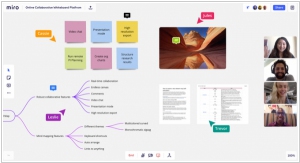
Miro, the creator of a digital whiteboard, is experiencing a significant surge in usage as businesses transition from physical workspaces to remote environments. In light of this, the company has recently announced an impressive $50 million Series B funding round. Miro sets itself apart by being more than just a lightweight add-in typically found in collaboration tools like Zoom or Microsoft Teams. It functions as a platform that integrates with various enterprise tools, much like Slack does for communication. This integration capability allows users to customize the base tool and build integrations with other commonly used tools, tailoring it to the specific needs of their teams or organizations. This approach has proven successful, with Miro reporting profitability and boasting more than 21,000 customers, including 80% of the Fortune 100 companies. Notable customers of Miro include Netflix, Salesforce, PwC, Spotify, Expedia, and Deloitte.
2018. RealtimeBoard, a visual collaboration platform for companies, raises $25M
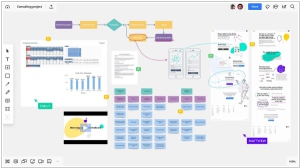
RealtimeBoard, an effective visual collaboration tool designed for distributed teams, has secured $25 million in Series A funding. The company intends to utilize the additional investment to support its ongoing expansion efforts. This includes enhancing customer acquisition capabilities through the strengthening of sales and marketing teams, as well as fostering growth within its user community. RealtimeBoard aims to develop a comprehensive visual collaboration platform that facilitates digital whiteboarding and serves as a central hub for integrating various collaboration tools utilized by organizations. Notable companies such as Hubspot, Skyscanner, Qlik, Autodesk, Netflix, and Twitter are among RealtimeBoard's esteemed customers, with the platform boasting a user base of 2 million worldwide. The startup generates revenue by offering its software-as-a-service (SaaS) on a per-seat basis for teams or entire companies.
2018. OmniGraffle for Mac gets the new Stencil Browser experience
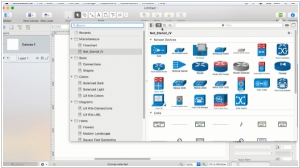
In the latest update of OmniGraffle 7.6 for Mac, you have more flexibility in positioning the Stencil Browser. You can now choose to have it in the left or right sidebar, or stick with the familiar views: popover and detached window. A convenient feature allows you to easily add new objects to any stencil by simply dragging them from the Canvas to the Stencil Browser. (Remember to hold the Option key while dragging.) Furthermore, you can select and use multiple stencils simultaneously, making it effortless to rearrange or reorganize them using Folders. These are just a few of the enhancements you can expect in the new version of OmniGraffle for Mac.
2017. OmniGraffle 7.5 gets big automation update
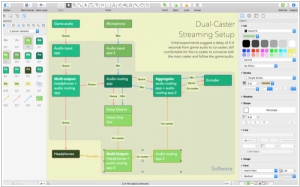
In the latest version of OmniGraffle 7.5 for Mac, a range of new automation features have been introduced, accompanied by significant enhancements to various functions and classes, along with the successful elimination of numerous bugs. For a comprehensive understanding of all the changes, you can refer to the release notes. This update is particularly significant for those who have been actively utilizing Omni Automation within OmniGraffle. With the enhanced automation capabilities, you are encouraged to share your scripts and explore the quick workspace improvements that Omni Automation brings to OmniGraffle.
2017. OmniGraffle gains drag and drop for iOS 11
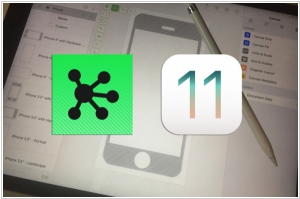
The iOS 11 update brings exciting enhancements to OmniGraffle 3.2, the versatile drawing and charting software, by leveraging the new drag and drop capabilities of the operating system. This integration revolutionizes the way you interact with the app, enhancing your workflow and productivity. OmniGraffle is widely recognized for creating organization charts and floor plans, allowing users to design intricate and precise diagrams. With its robust features, app designers can even use OmniGraffle to visually conceptualize their software interfaces. Moreover, OmniGraffle is designed for quick and efficient explanations, offering a range of tools and features that facilitate rapid drawing. Its devoted community of users greatly appreciates the platform, often sharing and selling curated collections of templates known as Stencils.
2017. OmniGraffle brings its Mac-features to iOS
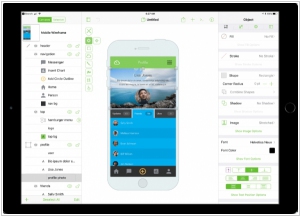
OmniGraffle has recently unveiled a new version of its iOS app, which incorporates a paneled design reminiscent of the Mac version. This update aims to provide a familiar experience for users who are already accustomed to the Mac version. The navigation and object inspection functionalities are now managed through these new panels. When using an iPad or a Plus-sized iPhone in landscape mode, the panels smoothly slide in from the sides of the screen. Conversely, on smaller iPhones or when using a Plus-sized iPhone in portrait mode, the panels elegantly slide up from the bottom of the screen. Furthermore, the iOS version of the app now aligns its core functionality with the macOS version, including the inclusion of features like artboards. One advantage of OmniGraffle being Universal is that it allows for convenient quick edits on your iPhone if that's the only device available. However, for the optimal experience, it is recommended to utilize OmniGraffle on the largest iPad screen within your means.
2017. OmniGraffle adds Artboards to presentation mode
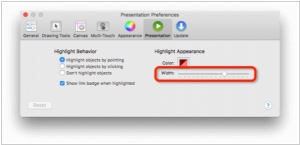
OmniGraffle 7.3 introduced a new feature called Presentation Mode, which enables users to showcase their artboards in a visually appealing manner. Previously, Presentation Mode allowed users to treat each canvas as a slide for a full-screen display. With the latest update, users can now present individual artboards as well. This feature allows designers to isolate their specific designs from the busy canvas, displaying only the content within each artboard's boundaries and above it in the layer hierarchy. To initiate a presentation, you can access the corresponding option in the View menu. During the presentation, you can navigate between canvases using the up and down arrow keys, while the left and right arrow keys allow you to switch between artboards. To streamline navigation, the sidebar has been simplified to minimize accidental clicks. Simply move the cursor all the way to the left for easier access.
2016. OmniGraffle 7 plays better with other graphics apps
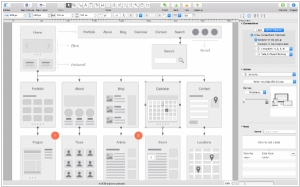
OmniGraffle, the vector drawing and diagramming tool for Mac, has received a significant update. In its latest version 7, OmniGraffle introduces a highly flexible canvas that can expand infinitely. Unlike other graphics applications that require users to select a predefined size when starting a new document, OmniGraffle 7 eliminates the guesswork by accommodating diverse needs. Furthermore, OmniGraffle 7 integrates seamlessly with other graphics apps, enhancing its compatibility. While the previous version allowed for exporting work as SVG files, the new update introduces the ability to import SVG graphics. This opens up new possibilities for incorporating OmniGraffle into a wider range of workflows. Additionally, professional users can leverage the power of artboards in OmniGraffle 7. By utilizing the Artboard tool, you can effortlessly draw shapes around objects on the canvas, similar to how you would create shapes with the shapes tool.
2015. OmniGraffle released universal iOS app
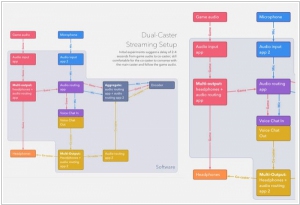
The Omni Group has launched a universal application, OmniGraffle 2 iOS app, which can now run on Apple's iPad, iPhone, and iPod touch devices. Additionally, they have incorporated new language support for Dutch, French, German, Italian, Japanese, Russian, Simplified Chinese, and Spanish. The new OmniGraffle 2 iOS App includes an optional professional upgrade, available as an in-app purchase for $49, which enables support for the recently introduced Fill Effects and Filters in OmniGraffle 6.1 for Mac. With the OmniGraffle 2 Pro upgrade, users gain access to Fill Blend and Filter effects, allowing them to blur, pixelate, and magnify content behind a shape. Furthermore, the latest update of the iOS app brings an updated Layout specifically adapted for smaller iPhone and iPod touch screens.
2013. OmniGraffle Pro 6 gets a facelift
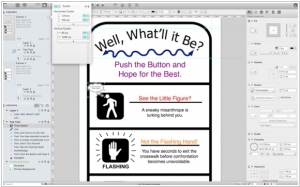
OmniGraffle 6 introduces an updated engine and some interface changes for users to enjoy and adapt to. While using version 6 may not be significantly different from its predecessor, OmniGraffle Pro, there have been notable enhancements to the tools and controls. The interface has been redesigned with the goal of making their functions easily comprehensible at a glance. With the new Resource Browser in OmniGraffle Pro, users have access to various templates and shape collections known as Stencils, which aid in creating documents. For instance, if you're working on a floor plan for an office, you can choose a space-planning template from the Resource Browser, where 1 inch equals 1 foot. Within the template, you can easily drag and drop walls, doors, and furniture objects from the space planning stencils.

